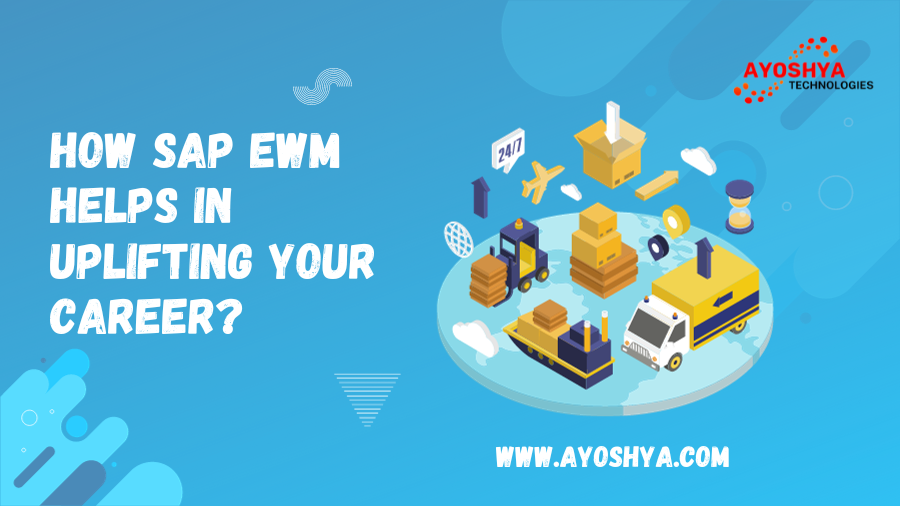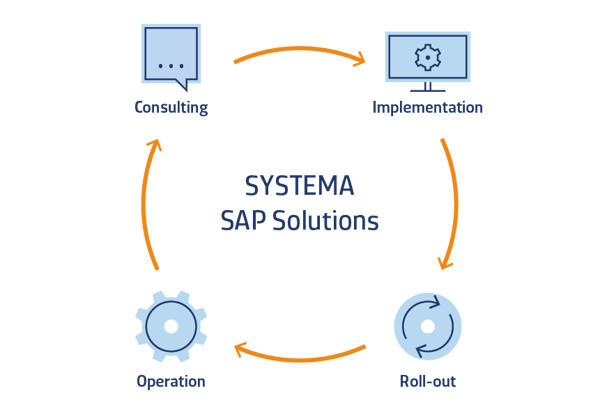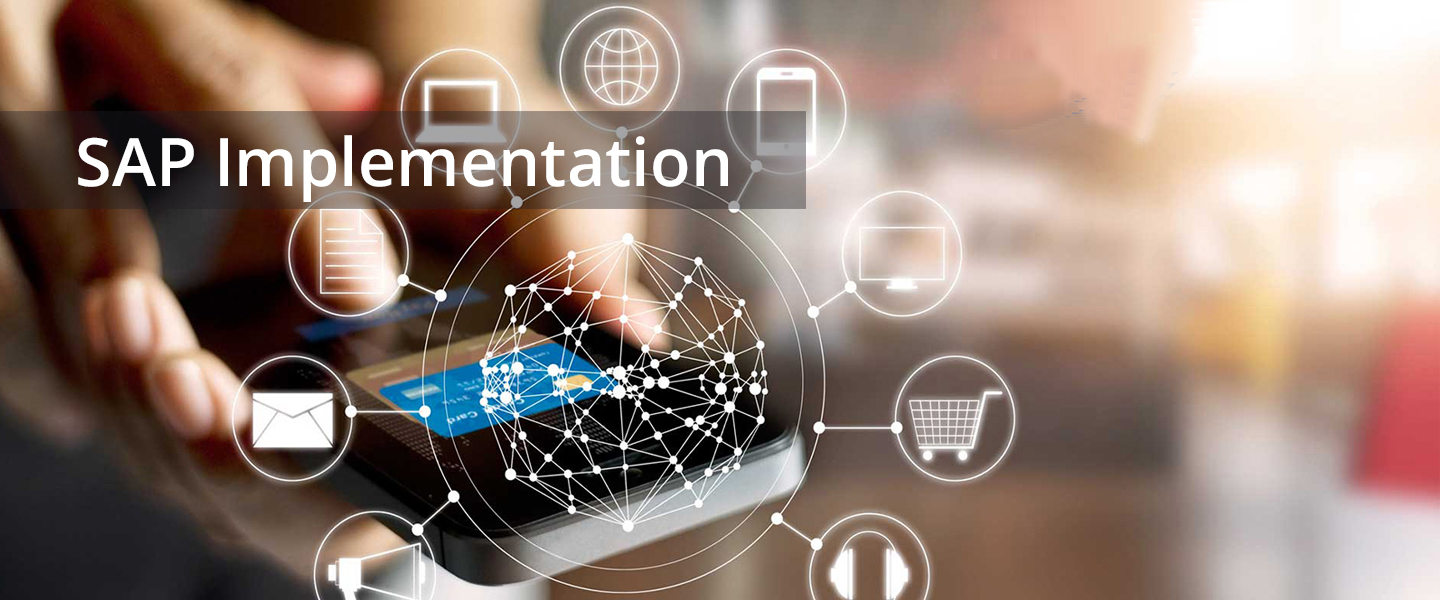What is SAP EWM & How it helps in Uplifting your Career?
What is SAP EWM & How it helps in Uplifting your Career? Whether you have a company or business with either a manufacturing or production unit, or otherwise trading and supplying, you would be needing storage space, accounting for the stock material both of raw materials and other stocks. Inventories may be those utilized for manufacturing space or the final ones that have to be moved.
All these demands need to be accounted for and to be under the purview of the planners in the company that takes care of the demands and supplies, purchases raw materials and accounts for all types of supplies. Right from the day of accounting stocks in arithmetical means to the present day of robots and innovative software program inputs, the administration of stores or inventories is referred to as warehouse management, which is a strong branch of supply chain management.
The present-day managerial task, to develop business success ensures the appropriate speed of circulation of information as needed and the marketplace target, second of all, the information on the items in progress and the finished and the flow of the cash from completion user and the financier to satisfy out these work.
The warehouse management ensures its success in the above three flow assumptions in general. A lot of development research has been done on this warehouse management, and software leaders of the globe give many inputs via their expertise, studies, and growth based on the feedback from the warehouse point to the merchant end.
What is SAP EWM?
This is nothing quite different from the normal warehouse inventory accounting and data management. It is the only developed software application approach for inventory accounting with logistics support from and to the storage facility.
Known as Extended Warehouse Management, this application software offers links to all its potentially associated branches viz., factory unit for production, store for resources, delivery spots, logistics or delivery system from manufacturing facilities, accounting of all these features and the details of the location.
This software, SAP EWM relaxes the supervisors the required input with most precision on resources in hand, demand details, available logistics support as well as other related info. This makes the business individuals make correct and needed choices for movements of items so that the Supply Chain Management operates efficiently.
The SAP EWM application is not static and the software application has been created to fit all inputs in a versatile manner. This has been loaded in such a way that it caters to the needs of numerous branches and the end-users at numerous places. The input from each one of them is synchronized and if needed show the essential steps to be taken with caution.
This program is sure-fire to that level that every second of time the input from the information loader is updated to make the liable person know the position of the supply accessible, inventory in the operate in progression, items in the delivery process and the supplied quantum which reveals the cash to find.
In a way, it can be understood that the EWM of a leading software application firm like SAP, enhances the available time, workforce, cash and other sources and most significantly the logistics support in the best possible manner.
Because the market was extremely competitive, and to make the functions of numerous branches in warehouse management, SAP, after its research study findings highlighted its SAP EWM, which is presently used by business worldwide. In a way, it can be told that global level traders who wish the optimum utility of inventories and stocks have found EWM as an advantage to their business requirements and success.
Why does a business get profit with the SAP EWM option?
There are many small, medium and large size software application providers globally, and it is a reality that SAP, for more than four years has been offering a lot of new application software and various tools for publishing and operation for different businesses, trades and individuals.
Astonishingly it is observed that SAP has been offering new tools for iconic software giants for their enhancement. In a way, when warehouse management had been handled by the various software applications, SAP had introduced their new product of software called SAP EWM, which has been found by the international business community.
A business stats validate that SAP’s Warehouse Management System has got nearly 5000 companies and trade clients worldwide and it goes on. The success tale began with the new research study findings of SAP users in getting the responses of the problems faced during warehouse data collection and services.
The multi-level data of stock and inventories at a store, at the work in progress, and at shipping procedure posed problems and SAP figured out the EWM as their warehouse management option. SAP did not design the EWM to replace the existing warehouse management applications, however, made noticeably and result oriented improvements to that, and it came to become vibrant and successful.
In Supply Chain Management which is the rational measurer of logistical activities of the final items, EWM has been made as one of the finest of SAP’s programs. From 2007 onwards, this has been provided to so many companies of small and large size companies.
SAP EWM has been created to accommodate the possible modifications if found essential to overcome the drawbacks of any type that has been recognized by the sensible actions. The actual users of this application suggest that this Extended Warehouse Management offers them clear and no-frill data on supply in hand or raw materials in hand.
The feasibility of bookkeeping and economic angles mingled in this management comforts the organizers to have their ideal decisions. Completion support of SAP removes obscurity from the customers. With more supply control out of this software procedure of SAP, cost-cutting is possible and maximum usage of sources is also ensured.
What are job opportunities for SAP EWM?
Those who have got SAP environment understanding of various points do not find any difficulty in any industry or manufacturing system or business, given that the knowledge hence has obtained them the key to solutions of various kinds at the offered times and places.
The confidence level of such individuals compared with others are said to be high. This is the best-known factor that people of SAP applications find their career building or profession building extremely easy and favourable. Warehouse management is an abstract expression if the most up to date applications in that branch of activity are not appropriately thought of.
SAP EWM on that matter has not been penetrated and investigated by any other firm like SAP. The German software legends have made their EWM application ideal for small, medium and large size industries and corporate.
This made the job hunters look for and possess SAP EWM and get financially rewarding placements in USA, Canada and several parts of Europe. India is the most up to date destination where individuals are drawn more towards SAP ERP and SAP EWM.
Considering that SAP EWM has made the learners have the multi-level and cross-functional roles within and outside the industry premises, they are expected to have the most useful abilities and deal with the requirements of the trade. This is among the strongest reasons where production is taken on, or stocks are kept and disbursed, SAP EWM hands obtain a recommended signal than others.
With greater than 5000 clients worldwide, and the consumers’ base remains in almost all developing and developed nations, and they are of small, medium and big companies, the professional possibilities for SAP EWM are just best ensured. Additionally, the scientific environment of the warehouse management under an all inclusive and specific software program guarantees that.
SAP EWM Certification and related training facilities meet the ability right into desired candidates. Elaborated and extended training program leads candidates for better understanding. It helps with a functional session with a complete business scenario that aims to describe all functionalities of SAP EWM package. SAP EWM Certification online practice tests assist prospects and prepare to encounter all possible questions in the final exam.
Institutions such as ZaranTech provides a platform for self-paced learning through its online training program on SAP EWM conducted by experienced and well-known industry experts. Skyrocket your career by learning from the best!x 1







